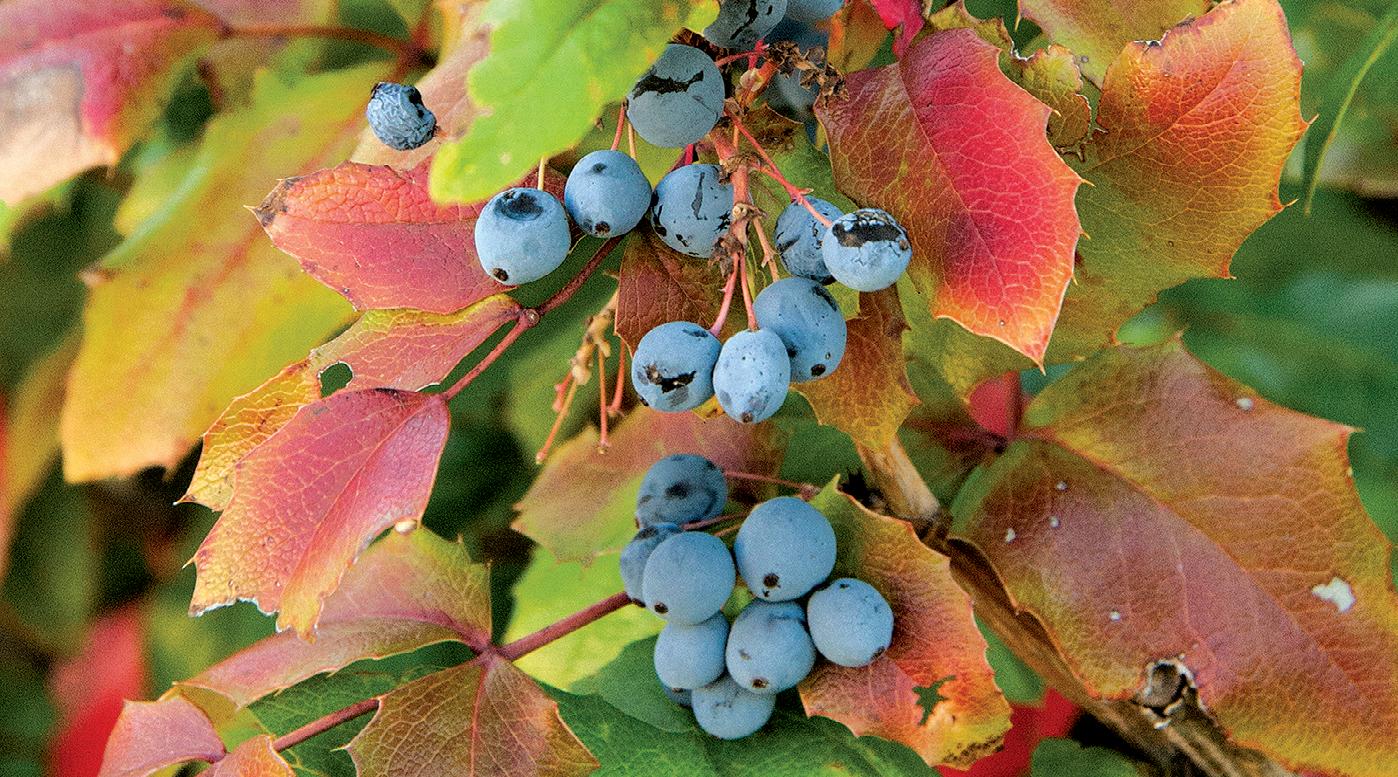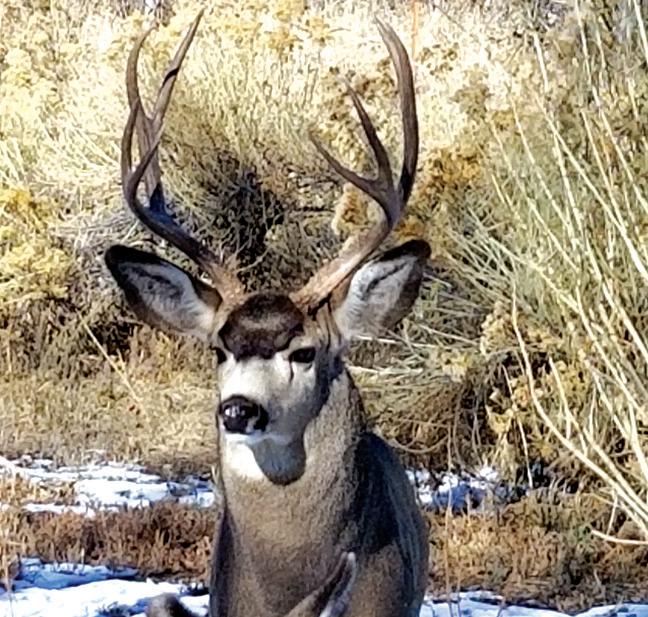
5 minute read
INTEREST
A prickly winter beauty – the creeping Oregon holly-grape
By Jessie Berta-Thompson Redstone Review
Advertisement
LYONS – Hiking in Colorado this time of year, if you were to pause for a moment to look down at the ground, instead of up at the stunning winter mountains, you might see brilliant patches of green, red, orange, burgundy, and purple. Upon closer inspection, you will see that these unexpected colors belong to small plants with spiky, leathery leaves. Leaning down further still, you see that the pale green buds tucked among the leaves in the center of the plant are visible, flower buds getting ready for spring even in the depths of winter. This winter delight is the creeping Oregon holly-grape (Mahonia repens or Berberis repens, Barberry family).
In the winter it’s the foliage that stands out on this broadleaf evergreen shrub (or subshrub or shrublet, since its small). The leaves of the creeping Oregon holly-grape are compound, made up of three to seven leaflets, each with sharp holly-like points around the leaf margin. Their remarkable pigmentation varies with season and sun exposure.
It is also one of the earliest plants to flower in our region. It blooms in March and April in the foothills (or possibly even February), then opens progressively later at higher and higher elevations. The small bright yellow flowers are borne in little clumps. If you can get closer, low enough to the ground, they smell sweet. The scent helps pollinators who are active early enough to find their first forage of the season.
Around Lyons, the creeping Oregon holly-grape grows abundantly on hillsides, either exposed or in the shade of ponderosa pines. The species is found in Colorado everywhere from the Front Range to the west, from 5,500 to 10,500 feet (just not in the eastern plains).
It does indeed grow in Oregon, and this species’ range extends across the western U.S. and Canada, to as far east as Minnesota and Texas. It is a plant with a creeping habit, keeping low to the ground, particularly compared to other close relatives that grow as larger shrubs (the Latin repens means creeping). As for the rest of its name, in addition to the holly-like leaves, its fruits look like little purple-blue grapes.
All manner of wildlife appreciates these fruits. Birds, bears, and small mammals eat the fruits and then disperse the seeds. Smaller creatures can also use the plants as protective cover. The leaves are somewhat protected from foragers by prickles and bitter alkaloids, but many species still eat them when winter feed is sparse, including deer, elk, moose, rabbits, mountain goats, and bighorn sheep.
The fruits, leaves, bark, and roots of the creeping Oregon holly-grape have all been used by humans over the ages. There are numerous documented indigenous uses of the plant as food and as medicine for a wide range of ailments. Groups across the West, including the Karok in California and the Blackfoot in Montana and Alberta, used the bright yellow roots of this plant as a dye for creating yellows and oranges (see the Native American Ethnobotany Database, http://naeb.brit.org/ for more uses). Contemporary foragers often use the sour fruits for jelly. Taking the edge off tartness with sugar is a theme for handling many ediblebut-challenging wild fruits.
The creeping Oregon holly-grape can survive forest fires, and so serves as an important early-emerging ground cover in landscapes recovering from fire. Passing flames destroy all parts of the plant above ground, but it can regrow quickly from networks of underground rhizomes.
Like many other woody species with this kind of fire ecology, very intense fires can kill the plants, if ground temperatures reach hot enough and deep enough to harm the roots. Currently, some of the burned areas of Rocky Mountain National Park, two years after the East Troublesome Creek Fire, show abundant creeping Oregon holly grape and other regenerating shrubs (e.g. Fern Lake trailhead).
For local readers, the creeping Oregon holly-grape can be found in the Foothills section of the Rocky Mountain Botanic Gardens in Lyons and all over the surrounding area, easily spotted along trails. It is a good garden plant for a partly shady or sunny spot where something low growing is desired. It’s a hardy perennial that is drought-tolerant once established. It spreads over time through underground stems, and its root network can help with erosion control. As mentioned above, its fruits and flowers support wildlife and pollinators, and its unusual winter color would enhance any garden’s four-season beauty.
Jessie Berta-Thompson is a member of the Rocky Mountain Botanic Gardens Board.
John Gierach took this picture of a big buck poaching bird seed from his backyard feeders.

Town Continued from Page 1
would benefit the Town of Lyons financially.
Mayor Angelo said, “The Town of Lyons will receive approximately $250,000 yearly from the increment accrued from the Moss Rock Development/Hotel. These funds can be used by the hotel for any additional costs incurred, but will predominantly will be used to develop additional projects in the Lyons Urban Renewal Authority (LURA). The funds can also be used to upgrade the infrastructure, water, sewer, electric, drainage in the LURA, basically downtown Lyons.”
He added, “In addition, the hotel will generate a projected $39,000 yearly from lodging taxes at $2 per night, which is not commensurate with comparable municipalities. Obviously, if the lodging tax were raised, the math is simple to figure.”
Mayor Angelo went on to say, “So, in closing we should all be very appreciative of the opportunity that Edna Johnson and Agnes Rey-Giraud (the hotel project owners) are providing for us. Sure, we can oppose the plan, but understand the golden opportunity that it represents, not just for the hotel owners, but for all of us. It is the duty of the Board of Trustee to do what is in the best interest of the Town of Lyons. We have been hoping for this opportunity for the past 20 years, it is upon us and we will perform our duty, indeed.”












